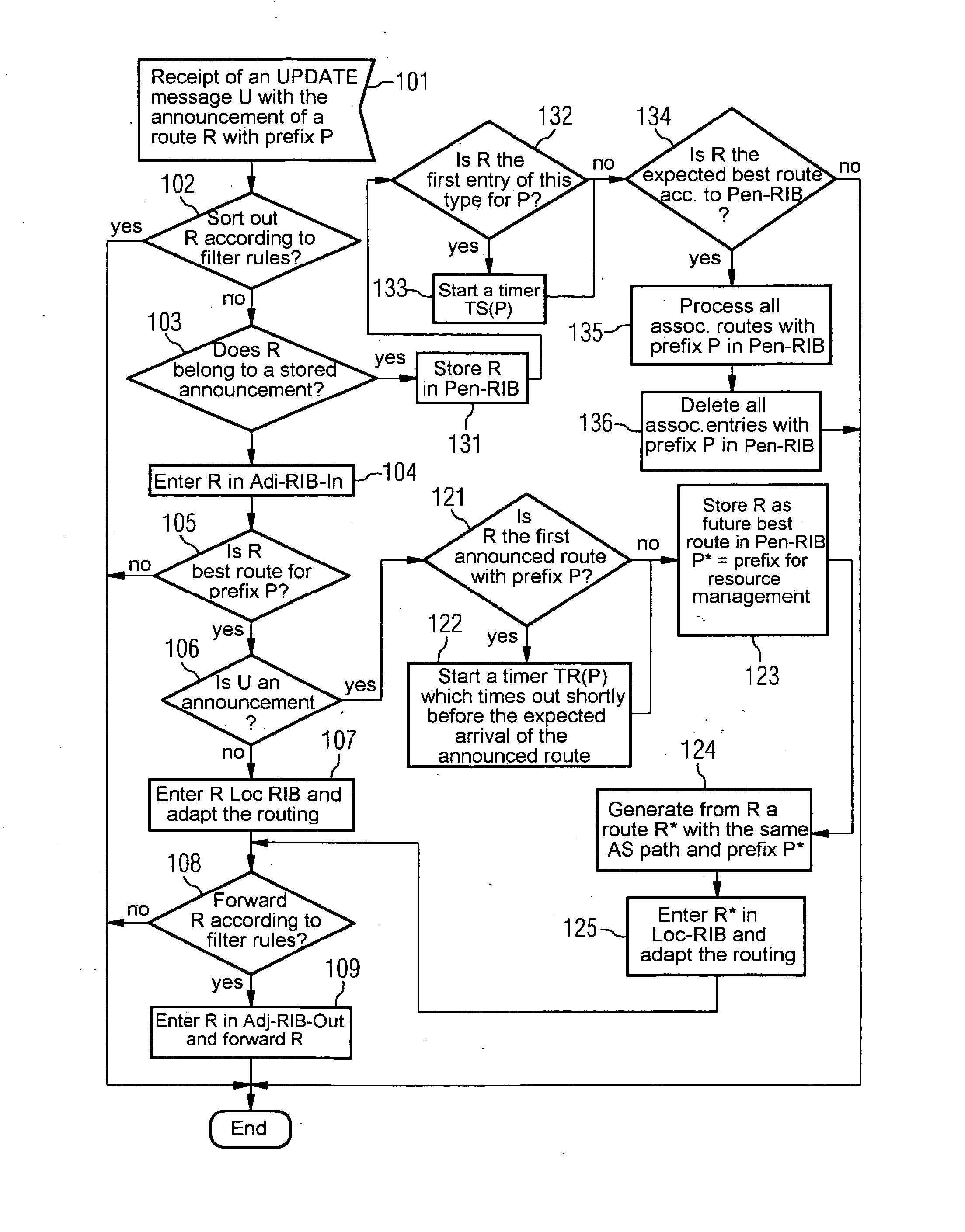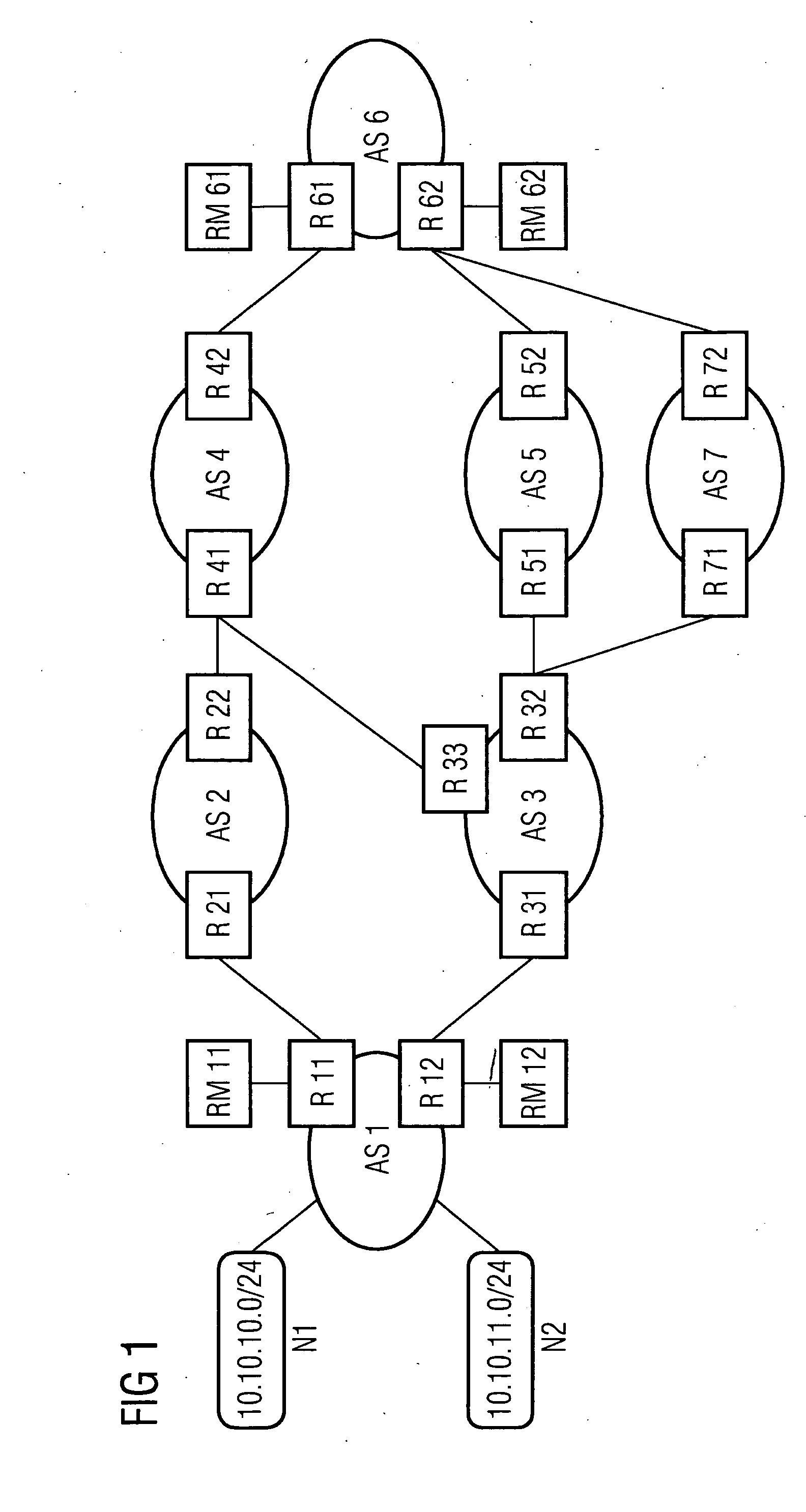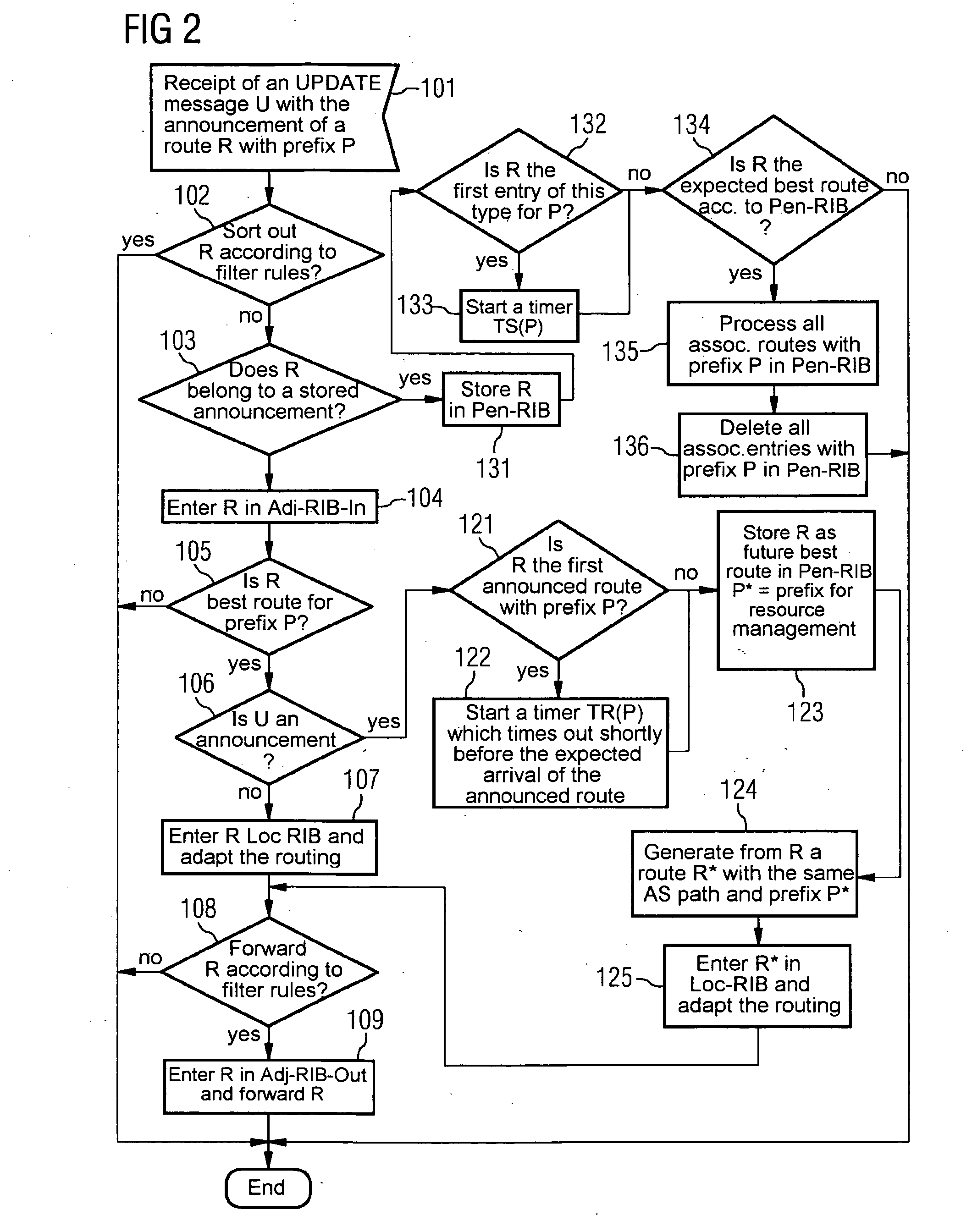Method and Network Element for Rerouting Traffic, While Maintaining the Quality of Service, in Networks with Slow Route Convergence
- Summary
- Abstract
- Description
- Claims
- Application Information
AI Technical Summary
Benefits of technology
Problems solved by technology
Method used
Image
Examples
Embodiment Construction
[0025] Within the framework of the exemplary embodiment, route changes during inter-domain routing are announced by means of the BGP protocol with a new form of UPDATE messages. The actual route changes are then undertaken delayed by a few minutes in time from the announcement, this being able to be undertaken in the way provided for in conventional methods in the BGP protocol. The time delay is selected so that an optimum route is determined as a rule before the route change and a resource reservation can be undertaken. Since an average convergence process in inter-domain routing takes about 3 minutes, a time delay of a few minutes makes sense. This enables the convergence phase and the resource reservation for QoS traffic to be given priority in the period of time between the announcement and the actual rerouting. The rerouting is only delayed in relation to the announcement if the convergent route is already known and the resources needed have already been provided. Route announc...
PUM
 Login to View More
Login to View More Abstract
Description
Claims
Application Information
 Login to View More
Login to View More - R&D
- Intellectual Property
- Life Sciences
- Materials
- Tech Scout
- Unparalleled Data Quality
- Higher Quality Content
- 60% Fewer Hallucinations
Browse by: Latest US Patents, China's latest patents, Technical Efficacy Thesaurus, Application Domain, Technology Topic, Popular Technical Reports.
© 2025 PatSnap. All rights reserved.Legal|Privacy policy|Modern Slavery Act Transparency Statement|Sitemap|About US| Contact US: help@patsnap.com



